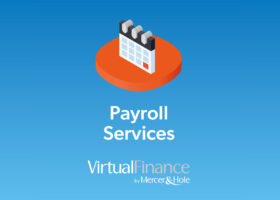Every box of chocolates has some with hard centres and some (possibly the same ones) that nobody wants. The changes for businesses announced are similarly mixed. The government has announced some exciting tax breaks on capital costs generally and a brand new relief on buildings but is continuing the clampdown on abuse of reliefs, eg on R&D and Entrepreneurs’ Relief. Our concern is that the proposed legislation may catch genuine businesses as well as the targeted avoiders. In our articles we have flagged up who is likely to be affected by the changes, good and less good, and made recommendations as to actions to take / things to consider.
Capital Allowances – tax relief for capital spend
The good news –
- New commercial builds
A Structures and Buildings Allowance (SBA) is being introduced on qualifying costs for new commercial buildings but only where the contract for construction is entered into on or after 29 October 2018. This is certainly welcome news for businesses and it is hoped that it will support investment in construction. It is though bad news for buildings already underway.
The SBA is 2% on a straight-line basis based on the original cost of construction or renovation. Assets qualifying for SBA will no longer qualify to be fully entitled to Annual Investment Allowance. On a sale there will be no balancing adjustments on the seller and the purchaser will be entitled to continue the claim.
- 100% tax allowance
The Annual Investment Allowance (AIA) which gives 100% relief on costs of plant, machinery, fixtures, fittings, commercial vehicles, etc will increase to £1m for two years from 1 January 2019.
- Electric cars
Great news for electric car users; in addition to the current 100% First Year Allowance which can be claimed, by a business, on a purchase of a car with a CO2 emission of 50g/km or less, a 100% First Year allowance is also available for the installation of an electric vehicle charging infrastructure. This relief was due to stop next year but the relief has been extended for a further four years to 2023.
Not so good news –
- Unfortunately, the Special Rate Pool (SRP) writing down allowance will fall from 8% to 6% from April 2019.
- Just a reminder that currently the 100% Enhanced Capital Allowances (ECA) first year allowance and first year tax credit will end in April 2020. Again, with careful planning you can secure both the 100% ECA allowances and £1m AIA.
What you need to consider next
Businesses should consider the timing of expenditure on plant and machinery.
It may be worth deferring the purchase of large items of plant particularly as we are only a couple of months away from 1 January 2019 for those with December year ends. The additional £800,000 relief is certainly worth waiting for.
Conversely for ’green’ purchases where ECA’s are available the purchases should be completed before relief ceases.
Short Term Business Visitors – PAYE obligations
Currently, where UK companies have Short Term Business Visitors (STBVs) arriving from overseas subsidiaries to work in the UK temporarily (no more than 30 days) there is no requirement for the UK company to operate PAYE under the Short Term Business Visitor Arrangement (STBVA). Providing the STBV is arriving from a country with which the UK has a double taxation agreement, the UK company can apply to HMRC for a STBVA. Furthermore, the individual is not then required to file a Self-Assessment Tax Return to report their employment income in the UK and they continue to be taxed on their employment income in their home country.
Following consultation, and with effect from 6 April 2020, the UK workday rule will be increased from 30 to 60 days. This will not only open up the PAYE special arrangement to more STBVs, it will also reduce the need for employers to monitor or restrict business travel when STBVs approach the 30 workday limit. The existing PAYE reporting and payment deadlines of 19 April and 22 April will be also be changed to 31 May to allow employers more time to gather relevant information about their STBVs to operate PAYE accurately.
This is a welcome change since these deadlines were in practice too restrictive to businesses and were making it difficult for companies to comply within the deadline.
Company capital losses
From 1 April 2017 where a company has revenue losses brought forward these losses can only be offset against 50% of profits, subject to a mitigation on the first £5 million in a 12 month period. As an example, a company has losses brought forward of £10 million and in the year ended 31 March 2018 it had profits of £7 million. Only losses of £6 million could be offset (£5 million plus 50% of £2 million). £1 million would be subject to corporation tax and £4 million of losses would be carried forward.
This restriction however, did not apply to capital losses brought forward which could be relieved in full against a chargeable gain. However, it was announced in the budget that from 1 April 2020, the HMRC will restrict the proportion of annual capital gains that can be relieved by brought-forward capital losses to 50%. The measure will include an allowance that gives companies unrestricted use of up to £5 million capital or income losses each year to mirror the revenue loss position.
If you are looking at a significant gain and have substantial capital losses do you need to make sure the disposal happens before April 2020? Remember that for tax the sale date is the date of an unconditional contract and not completion!
Research & development tax relief – use it, do not abuse it
In response to perceived abuse of the Research & Development (R&D) tax relief, new measures are being introduced to combat this.
HMRC has identified £300m of fraud linked to this relief where corporate structures have been created without undertaking any legitimate R&D activity. These companies are often loss making and exist only in order to claim cash tax refunds under the R&D scheme even though they have few or no employees in the UK.
As a consequence, from 1 April 2020, a qualifying loss-making company will be restricted to claiming a repayable credit of a maximum of three times the company’s total PAYE and NICs liability for that year. The government will consult on how this cap is applied to minimise the impact on any genuine UK business so we hope the relief will continue to be directed to where it is justified. We do have a concern on companies claiming relief on significant costs for consumable parts where relief may be restricted and hope this is addressed in the new provisions.
R&D tax relief is a really valuable relief that is in fact available to more businesses than realise they can claim so it is a great shame to see that some of the funds ear marked to encourage innovation and technological progress are being diverted.
We recommend that if you do not already claim R&D tax relief, you review whether or not you may be able to. If you already make claims you may wish to look at the way these are calculated and how individuals within the business are rewarded. Restructuring so that shareholder employees receive PAYE salary instead of dividends in future may save falling foul of the new capped relief.
Intangible assets
Acquisition of goodwill
The history – in 2002 the taxation of intangible assets (goodwill, Intellectual Property,etc) for companies was substantially changed to provide for tax relief on assets newly acquired. Over the years this relief was restricted and from 8 July 2015 the relief was abolished altogether.
It was announced in the Budget that a new targeted relief will be introduced from April 2019 for the cost of goodwill (the amount paid for a business that exceeds the fair value of its individual assets and liabilities) on the acquisition of businesses with eligible intellectual property.
Sale of goodwill
More history – Where a chargeable asset such as goodwill is transferred inter-group and within six years the transferee company is sold outside the group then a de-grouping charge arises on the market value of the asset on transfer. However, since 2011 the gain on “old” assets (i.e. acquired or created before 1 April 2002) is added to the gain on the disposal of the shares being disposed of. If that sale is eligible for substantial shareholding exemption then the de-grouping gain is also exempt.
Unfortunately, this does not apply to de-grouping charges in connection with new (i.e. created or acquired on or after 1 April 2002) intangible assets.
This has long been recognised as unfair and we are pleased that with effect from 7 November 2018, the government will also reform the de-grouping charge rules, which apply when a group sells a company that owns intangibles, so that they more closely align with the equivalent rules elsewhere in the tax code.
Presumably, this means they will also escape a de-grouping charge where substantial shareholding exemption is available but we await further details.
Timing is everything – should you delay an acquisition or postpone a sale to fall within the new rules?
There have been quite a few changes to businesses, please contact me or your usual Mercer & Hole contact.






 8 mins
8 mins 

